Total solar eclipse 2024: Millions enjoy event in Mexico, United States and Canada
- Published
- comments
Watch: Full solar eclipse wows crowds in USA, Canada and Mexico
Millions of people across North America enjoyed one of the most spectacular sights visible from the Earth, as a solar eclipse swept across the continent on Monday.
People in Mexico, Canada and the United States gathered along its route to view the spectacle.
A solar eclipse happens when the Moon moves in between the Earth and the Sun, blocking out the Sun's light.
The event plunged daylight into darkness for up to four minutes in parts of the region.
Follow all the action as it happened below.
Mexico
Watch: See the path of the eclipse though Canada, the USA and Mexico
The eclipse made landfall close to the Mexican beach town of Mazatlán on the Pacific coast, arriving at 11.07am local time.

Hundreds of people wearing special protective glasses had gathered to see the Moon blocking out all but a halo of light - called a corona - around the Sun's outer edge.
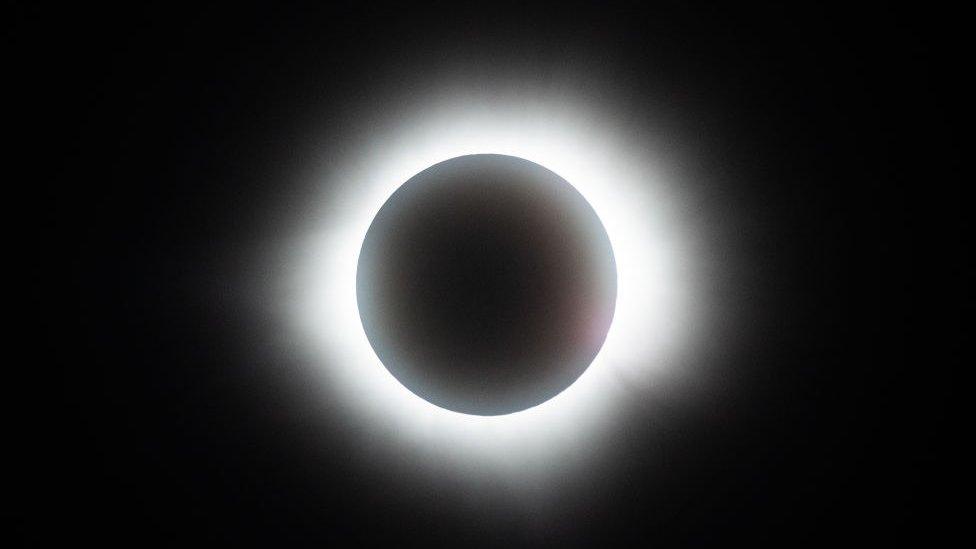
At first, the Moon's outer edge seemed to be touching the Sun. Then it blocked more and more of the Sun's light, until cheers erupted as all finally went dark.
US
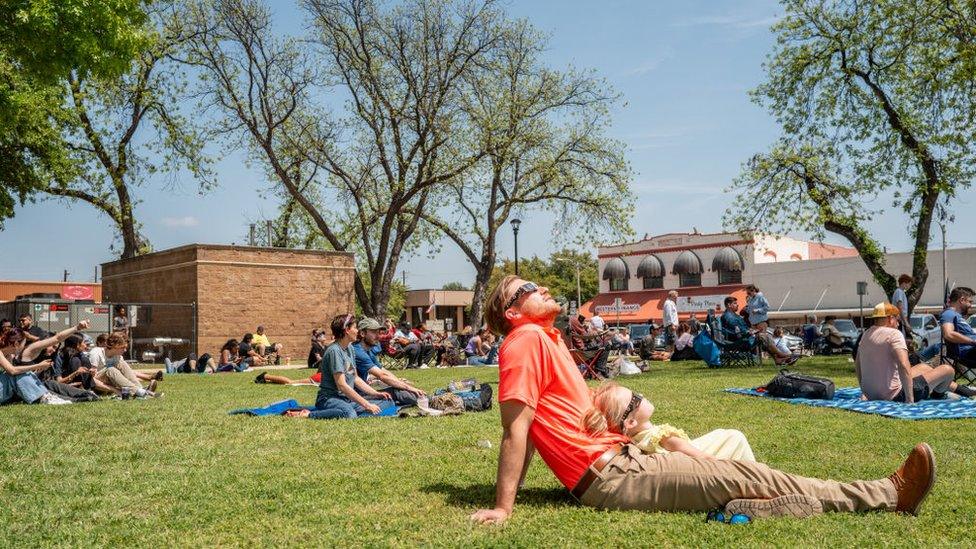
The eclipse then moved over the border into the US and brought darkness to many areas of the state of Texas, including the cities of Austin and Dallas.
From there, the eclipse moved on, carving its path north-east through the United States.
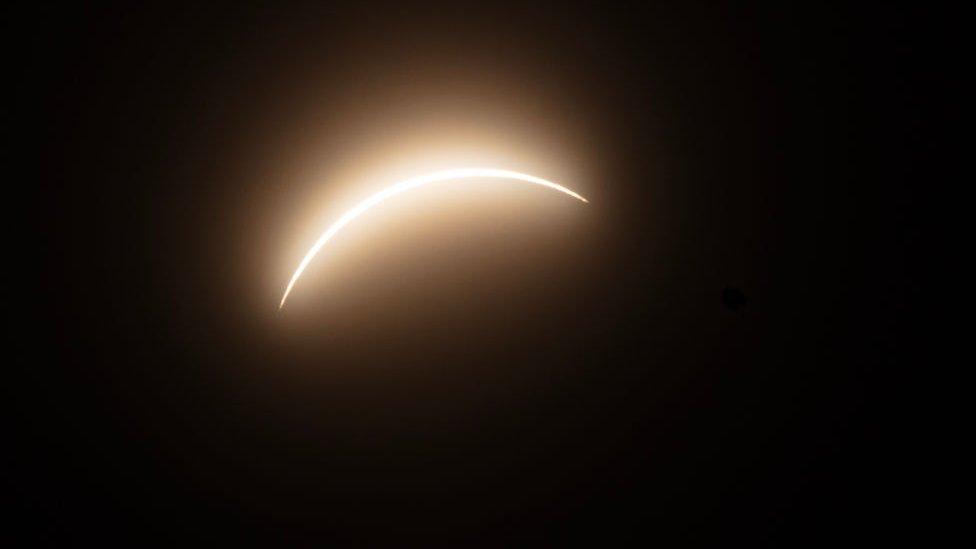
It passed through a number of different states including Oklahoma, Arkansas, Missouri, Illinois, Kentucky, Indiana, Ohio, Pennsylvania, New York, Vermont, New Hampshire, and Maine.

It wasn't just people who came out to watch the solar eclipse - people even brought along their pets too!
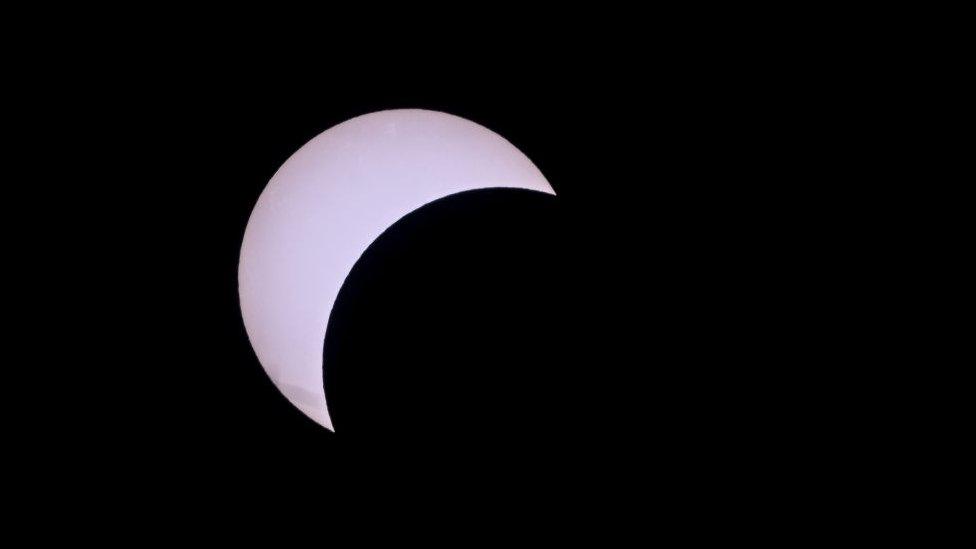
Many big American cities were not lucky enough to be on the path of totality - instead, they observed a partial solar eclipse.
This is when the Moon only covers part of the Sun.
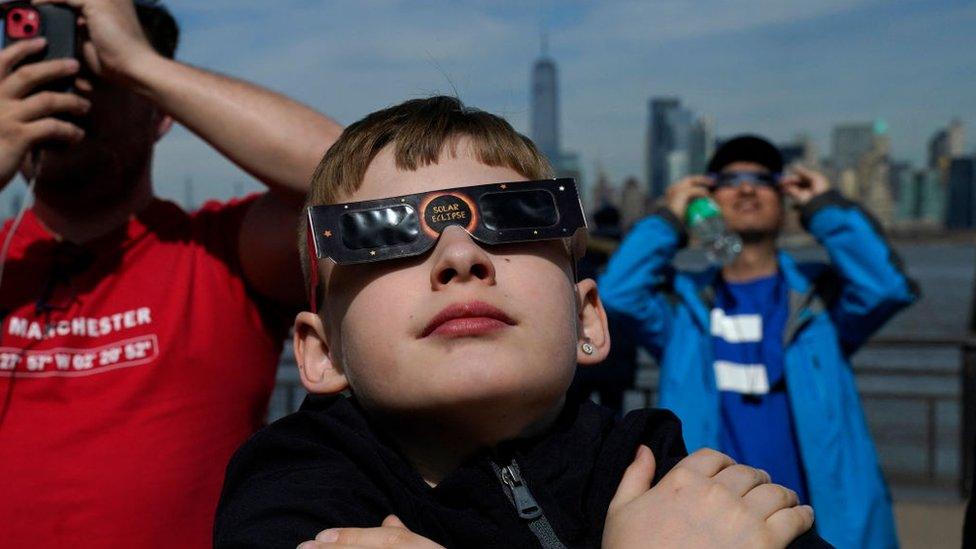
Washington DC and New York City both saw about 90% of the Sun covered by the Moon and plenty of people took to the streets to catch a view.
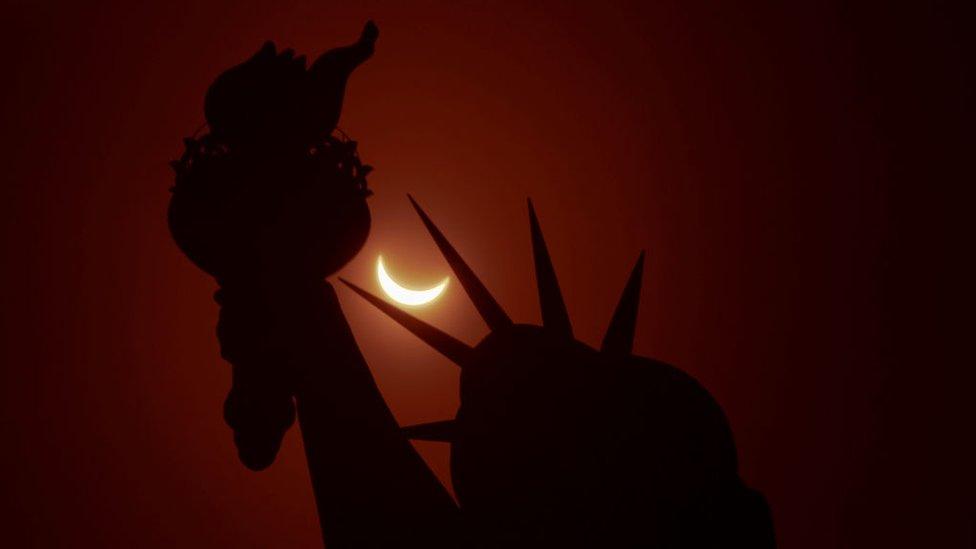
The solar eclipse could be seen behind many landmarks including the famous Statue of Liberty as the Moon passed in front of the Sun.
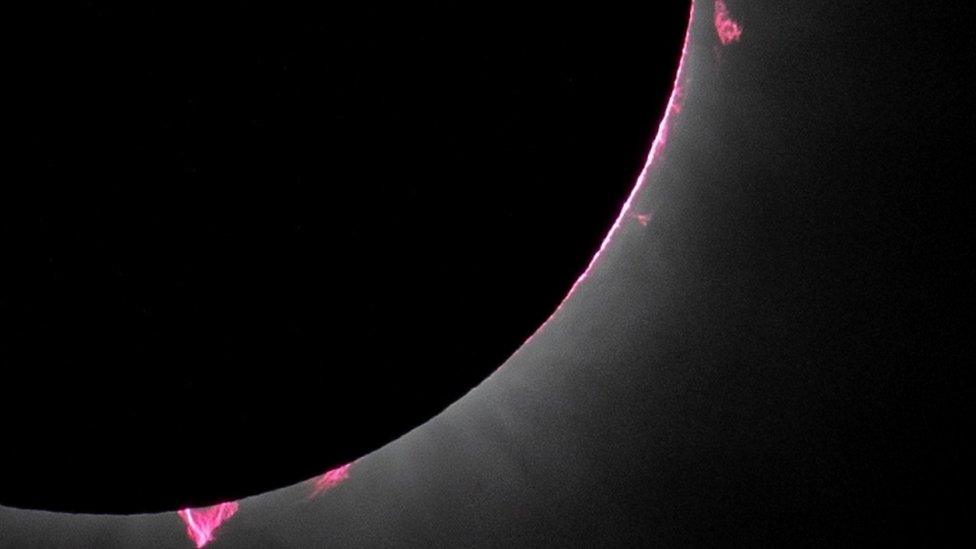
Some people were even lucky enough to see a phenomenon called solar prominences - large, loop-like structures - extending from the Sun while it was behind the Moon.
Canada
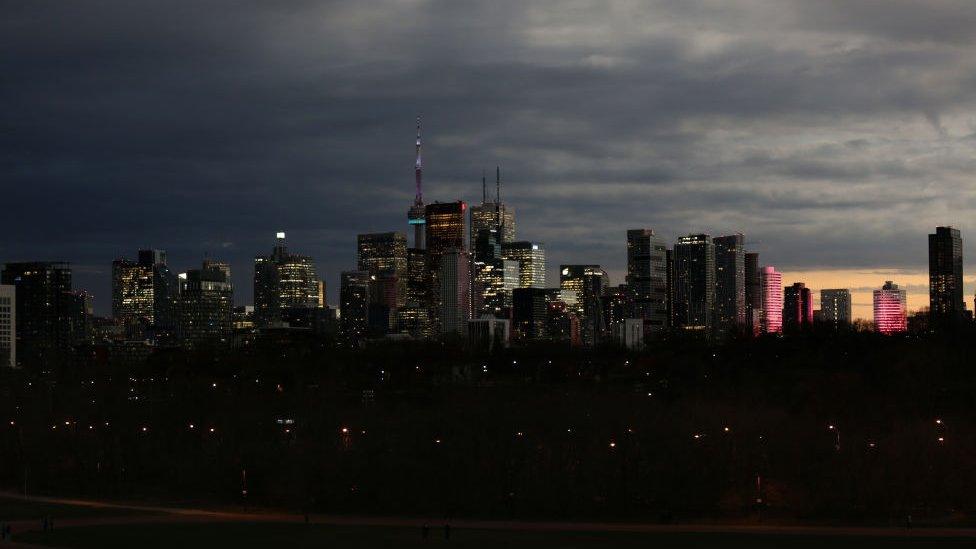
Stargazers in Canada were the last ones to catch a glimpse of the incredible event over land, before the eclipse crossed into the Atlantic Ocean and out of view.
The next total solar eclipse will be in 2026, which will mainly be visible over the Arctic Ocean and to some parts of Europe.
North America will have to wait a little longer - until 2044 - for their next total solar eclipse.
